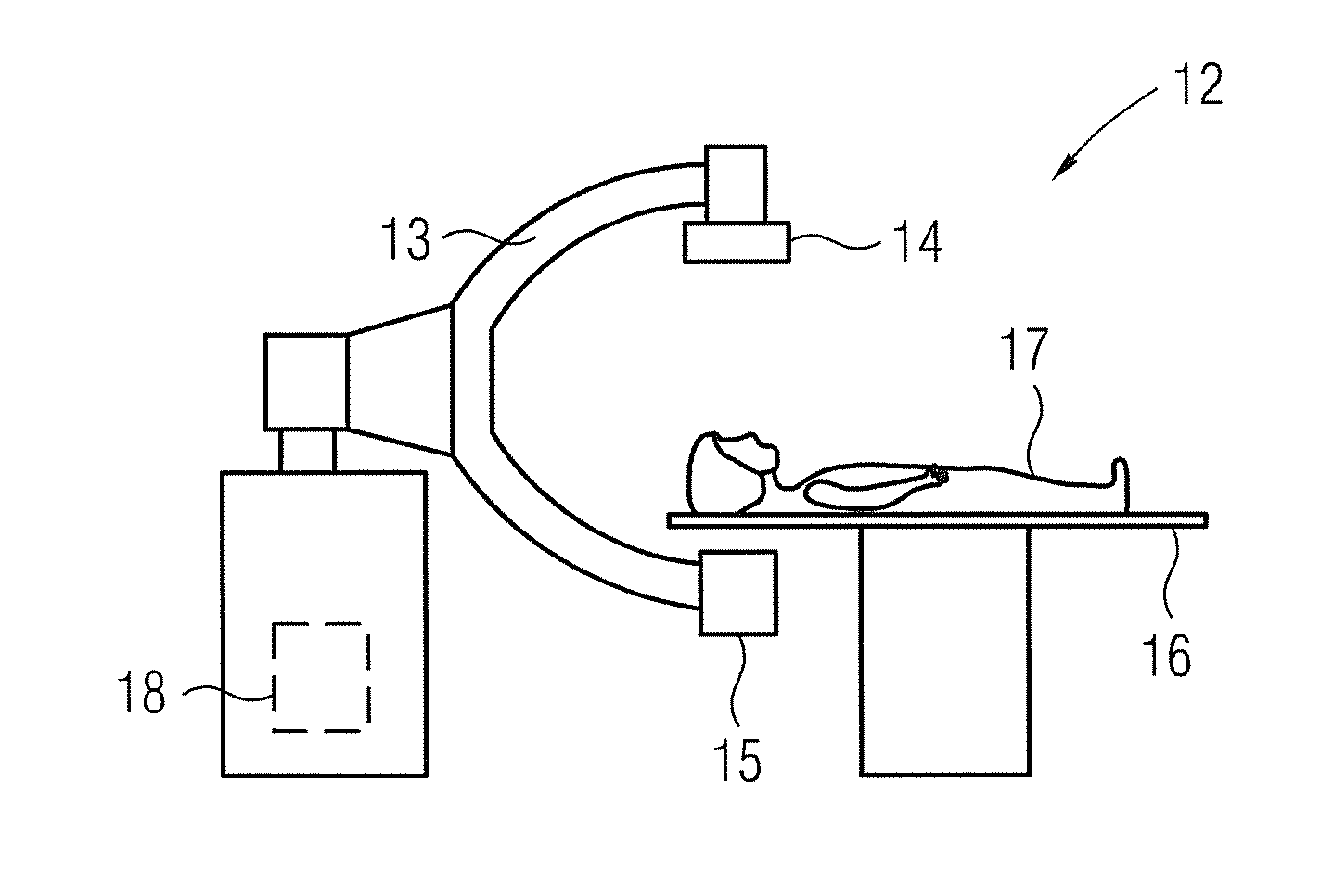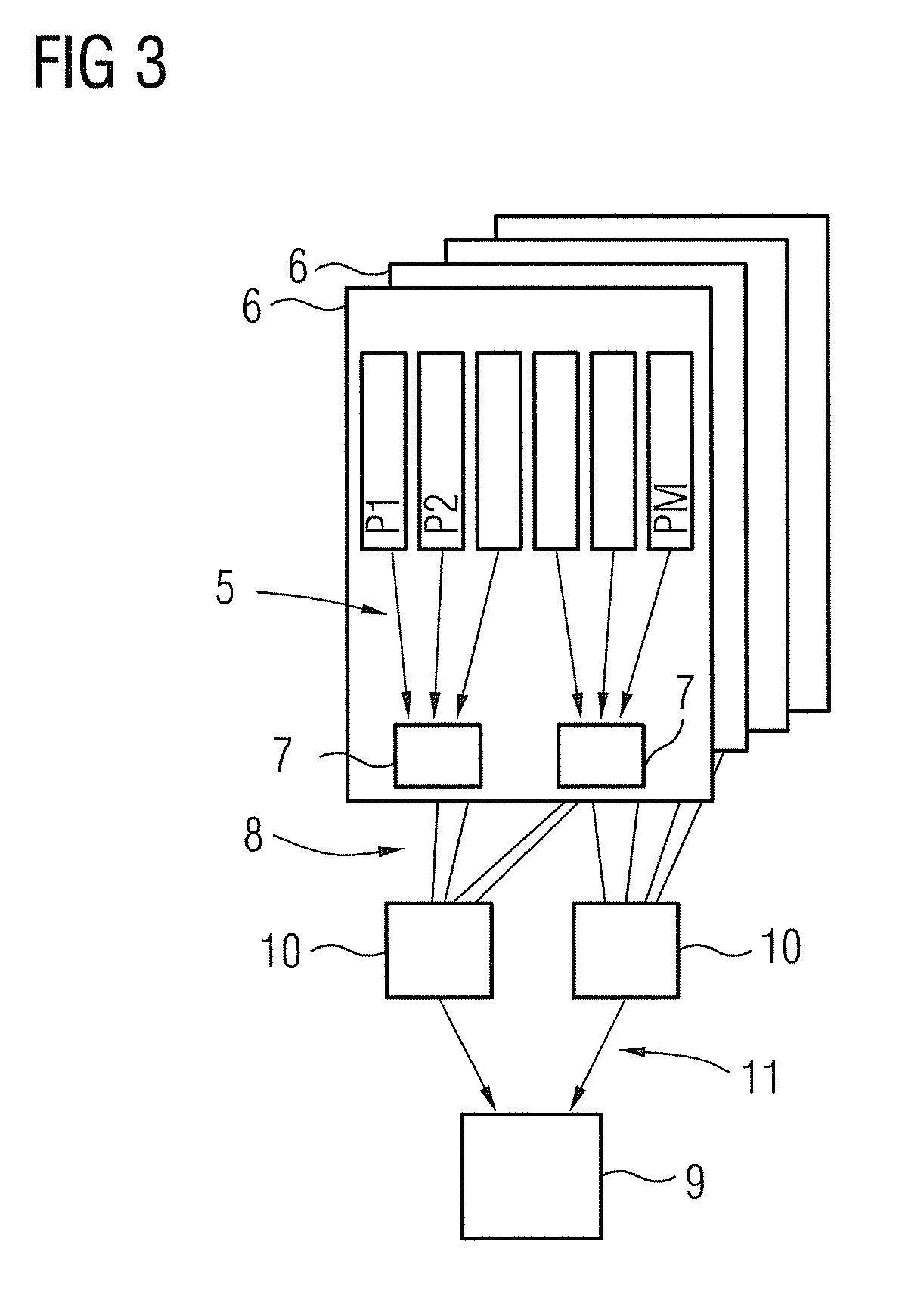Method for recording and reconstructing a three-dimensional image dataset and X-ray apparatus
a three-dimensional image and dataset technology, applied in applications, instruments, nuclear engineering, etc., can solve the problems of not being able to preclude cerebral hemorrhage with certainty, not being able to restore the contrast of individual projection images, and having a lower contrast resolution and contrast-to-noise ratio, so as to achieve the effect of improving quality
- Summary
- Abstract
- Description
- Claims
- Application Information
AI Technical Summary
Benefits of technology
Problems solved by technology
Method used
Image
Examples
Embodiment Construction
[0039]FIG. 1 shows a basic flowchart of the method according to the invention for the exemplary embodiments described here. In a step 1 the projection data is acquired in the form of projection images. This is accomplished in such a way that following completion of the recording operation for all or almost all recording geometries that are to be used for recording the three-dimensional image dataset, more than one projection image, for example 30 to 50 projection images, is present. In this context a recording geometry is to be understood as meaning a defined geometric position and orientation of X-ray tube assembly and X-ray detector. For the sake of simplicity it will be assumed for the following discussion of the exemplary embodiments that for each recording geometry a fixed number of projection images that is the same for all recording geometries will be recorded.
[0040]It should be pointed out, however, that this does not have to be the case, but instead that it is also possible...
PUM
 Login to View More
Login to View More Abstract
Description
Claims
Application Information
 Login to View More
Login to View More - R&D
- Intellectual Property
- Life Sciences
- Materials
- Tech Scout
- Unparalleled Data Quality
- Higher Quality Content
- 60% Fewer Hallucinations
Browse by: Latest US Patents, China's latest patents, Technical Efficacy Thesaurus, Application Domain, Technology Topic, Popular Technical Reports.
© 2025 PatSnap. All rights reserved.Legal|Privacy policy|Modern Slavery Act Transparency Statement|Sitemap|About US| Contact US: help@patsnap.com



